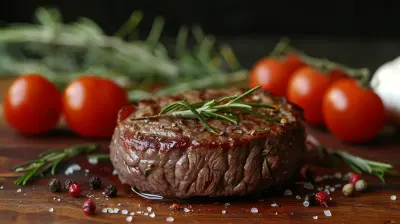Supporting Your Child Through Growth Spurts and Pains
4 November 2025
Ah, growth spurts. Those sneaky little milestones that turn your sweet, childlike cherub into a lanky, bottomless pit of snacks overnight. If you’re a parent, you know exactly what I’m talking about. One minute your kid can still squeeze into their favorite dinosaur pajamas, and the next, you're wondering if they've been stretching themselves out like Laffy Taffy in their sleep.
But it’s not just about longer limbs and empty fridges. Growth spurts often come paired with their less-loved cousin—growing pains. And helping your child navigate this rollercoaster of aching knees, emotional whiplash, and midnight hunger attacks can be… well, a parenting adventure to remember.
So, grab your favorite beverage (wine or coffee, no judgment here), and let's dig into how you can be the superhero your child needs during these wild spurty times—with a dash of humor and a splash of compassion.
What the Heck Are Growth Spurts, Anyway?
Let's start from the top. Growth spurts are those periods where your child's body seemingly upgrades overnight like some kind of biological software update. One minute, you’re looking down at them. Blink. The next, they’re asking if you’ve shrunk.These spurts most commonly happen during:
- Infancy (you know, when the onesies last about 14 seconds)
- Ages 6–8 (when they suddenly stop fitting in shopping carts)
- Puberty (also known as “The Era of Socks That Vanish and Doors That Slam”)
Growth spurts can last anywhere from a few days to several weeks. And while that might not sound like a big deal on paper, ask any parent who’s dealt with three consecutive nights of midnight grilled cheese—it’s a thing.
Signs Your Child Is Leveling Up (Physically)
Not sure if your kid is in the middle of a growth spurt or just acting like a small, loud tornado? Look out for these telltale signs:1. They Eat Like a Hungry Hippo
Seriously, it’s like someone pressed the “unlimited buffet” button. One minute they’re full, the next they’re standing in front of the fridge like it’s a museum exhibit titled “Feeding Time.”2. They Sleep More Than a Teenaged Cat
Sleep is the body’s way of saying, “Hold my juice box; I’m growing.” More naps, longer nights, and sudden crashes are all part of the spurt-season package.3. They’re All Arms and Legs
Is your child tripping over their own feet like a baby giraffe on roller skates? Welcome to awkward growth! It takes time to adjust to newfound limbs.4. Pains in the Legs (Usually at Night)
Ah yes, the infamous growing pains. Often in the thighs, calves, or behind the knees—these are most common at night when your child suddenly transforms into a musical called “Ouch, That Hurts!”5. Emotional Rollercoasters
Tears over the wrong kind of toast? That’s the spirit. Growth spurts affect hormones and moods, which means drama... lots of it. Keep chocolate and tissues nearby.
So, What Exactly Are “Growing Pains”?
Despite sounding like the name of a 90s sitcom (oh wait, it was), growing pains are real. They’re muscle aches, primarily in the legs, that usually show up in kids aged 3 to 12.Now, don't freak out—growing pains are harmless. They're usually not linked to any serious condition, though they can be painful enough to wake your child at 2 a.m. and send both of you on a midnight ice-pack adventure.
How to Comfort Your Child Through Growth Spurts and Pains
Alright, so your kid’s eating you out of house and home, crying over toast, and moaning about their “hurty legs.” What now? Here’s your step-by-step guide to surviving—and dare I say, thriving—through this.1. Bring on the TLC (Tender Leg Care)
- Massage: Rub those sore little legs like you're a spa owner in a Pixar movie. Nothing fancy, just gentle and loving.- Warm Baths: Bath time is not just for getting clean, it's for soaking out the soreness. Dim the lights, toss in some bubbles, maybe even a rubber duck for morale.
- Heating Pads: Just like how you need a heating pad after attempting yoga, your child’s legs need some warmth too.
2. Fuel the Machine (a.k.a., Feed Them)
Their bodies are building bones, stretching muscles, and growing… like, everything. So it’s no surprise that they’re permanently hungry. Keep healthy snacks on hand:- Protein-packed foods like boiled eggs, peanut butter, Greek yogurt
- Complex carbs like whole grain bread, oatmeal, sweet potatoes
- Calcium-rich foods like cheese, milk, broccoli (if you can bribe them to eat it)
Oh, and hydration. Water isn’t just for plants, folks.
3. Sleep is Not Optional—It’s Crucial
This is when most of the growth magic happens. So enforce consistent bedtime routines. Think of it this way: if sleep were a superpower, you’d be raising mini-Hulks.Need help? Try:
- Reading calm bedtime stories (no, not the one with the zombie werewolf, please)
- Keeping the room cool and dark
- Weighted blankets (like a hug that doesn’t complain it’s too hot)
4. Stretch It Out
Light stretching (not bootcamp-style!) can help prevent stiffness and reduce soreness. You don’t need a yoga mat or incense—just a little quiet time to move their wiggly bodies.Great stretches for kids:
- Toe touches (which may end in giggles)
- Butterfly stretch (aka “legs like a frog?”)
- Gentle quad and hamstring stretches
5. Normalize the Experience (Without Sounding Like a Robot)
Kids often feel confused or even scared when they wake up with sore legs or can’t stop feeling “off.” Let them know it’s totally normal and nothing to be worried about. Keep it casual, like:“Your legs ache because they’re getting longer! Soon you’ll be tall enough to help me reach the top shelf.”
Bonus: You just tricked them into thinking chores are a reward. #ParentingWin
6. Know When It’s Something More Serious
While growing pains are usually harmless, you should check in with a healthcare provider if:- The pain is persistent or only in one leg
- There’s swelling, redness, or warmth
- Your child is limping or refusing to walk
- They’re losing sleep every night from it
Trust your instincts—you know your kid better than WebMD ever will.
The Emotional Side of Growth (Yep, That’s a Thing)
Remember how awkward puberty was for you? Braces, body odor, and feelings you couldn’t explain? Your child is going through their own version, and it may start younger than you think.Growth spurts can make kids more weepy, anxious, moody or even withdrawn. Suddenly they’re not just aching physically—they’re trying to make sense of who they are.
So:
- Validate their emotions (even if they’re crying because toast was cut the “wrong” way)
- Offer reassurance (“Yep, I felt awkward too when I was your age” goes a long way)
- Keep communication open (even if their only response is a grunt)
Your presence matters more than any perfect answer.
When It’s All Too Much: Time for Humor and Patience
Picture this: You're half-asleep, trying to microwave chicken nuggets while your child, who now has the emotional depth of a Shakespearean actor, is sobbing over a stubbed toe and asking if you'll love them when they're taller than you. This is parenting during a growth spurt.If you don’t laugh, you’ll cry. And that’s okay too.
Here’s your reminder to:
- Give yourself grace
- Take breaks (tag in a partner, grandparent, or babysitter)
- Keep snacks for YOU in the secret stash
Parenting a growing child is like riding a tandem bicycle blindfolded while juggling bananas. You’re not alone. You’re doing great. And your kid? They’ll look back and thank you for every leg massage, snack refill, and midnight snuggle.
Final Thoughts: Growing Up Is a Team Sport
Supporting your child through growth spurts and pains isn’t just about ice packs and extra carrots. It’s about showing up. With love, with laughter, with snacks in your bag and patience in your heart.So next time your child wakes up taller, crankier, or just plain confused, take a deep breath. You’ve got this. After all, growth doesn't happen overnight.
Except when it totally does.
all images in this post were generated using AI tools
Category:
Pediatric HealthAuthor:

Arthur McKeever
Discussion
rate this article
1 comments
Harmony Lawrence
Embrace growth; love flourishes within!
November 8, 2025 at 4:31 AM

Arthur McKeever
Thank you! Embracing growth truly strengthens our bond with our children during these challenging times.


